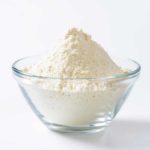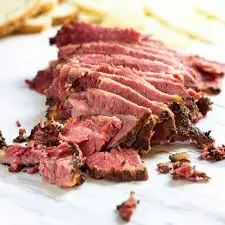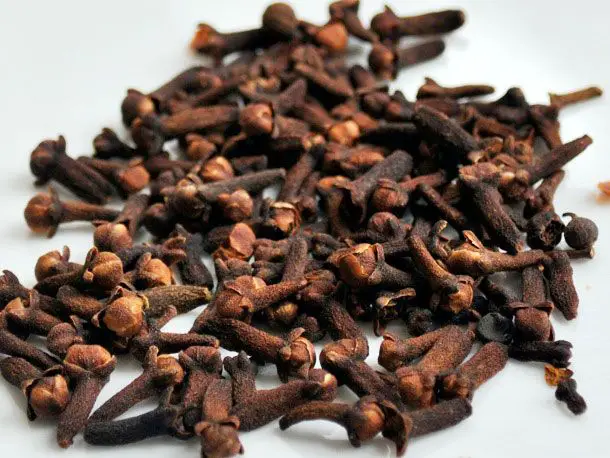How To Thicken Soy Sauce?

How to thicken soy sauce? Is this what you are here for? This is a common question people love to ask. No worries. Here in this article , I am going to provide all the necessary information you would need about this matter. Read on.
The thickening process of soy sauce can increase its sweetness. It helps improve its consistency and structure. You can make use of thick soy sauce for various dishes including warm, spicy soups, and stews.
Soy sauce is essential whenever you prepare Asian food items. Soy sauce is essential when you’re trying to replicate the recipe of a specific dish.
This is why we’ll show you the best way to thicken your soy sauce to help you understand the best way to make it thicker, and how to thicken soy sauce.
How to thicken soy sauce?
It is possible to thicken soy sauce by using a variety of methods but the most popular ones involve making use of cornstarch, flour rice starch, or making a simple reduction in soy sauce.
If you are using starch or flour, it is necessary to mix it with half a cup of water. Make sure to stir it well so there aren’t any clumps and then pour it into soy sauce. Bring it to a boil and cook until it is the consistency you desire.
This can be done using any sauce, whether it’s soy sauce, chili sauce, teriyaki sauce, or even gravy.
The thickening of soy sauce is done by adding flour or starch.
We’ll provide you with an easy ingredient list since you won’t require much to make soy sauce thicker. We’ll assume that any additional seasonings will be determined by you, so feel free to add any flavorings you’d like to add.
To make soy sauce thicker, you’ll require:
Soy sauce, however, should be used as much as you need. Remember that you might need more if it starts losing flavor as it thickens.
You will also need half cup of water for mixing the flour or starch in.
Take two teaspoons cornstarch, rice starch, wheat flour, potato starch or another starch that you like.
Moreover, 2 teaspoons of brown sugar (optional) is required.
Last but not least, any seasonings you are fond of (optional).
Put the starch and water together in a cup, then mix them thoroughly. Be sure that there aren’t any clusters of any kind. This mixture must be fluid. Add additional water, if necessary.
After it’s all well-mixed, add it to the soy sauce simmering. Be sure to stir constantly and at a low simmer. Allow it to simmer for five minutes, and it will begin to thicken. If you’d like to add any spices to be added, do it now.
If you’d prefer it to be less dense, you can add less of the mixture, say just half. If you mix the entire mixture, you will get an incredibly thick sauce that’s as thick like sour cream.
Here is a note on the commercial soy sauce.
If you purchase soy sauce, you’ll almost always come across it in its normal thin form. This is because you’ll see hydrolyzed soy sauce, which isn’t very thick as it is often a low-cost imitation.
The authentic, aged soy sauce will be slightly heavier. Soy sauce that is thick occurs when you purchase well-aged bottles, which should be no less than 3 or 4 years.
The color is darker, the taste richer, and the whole experience is more enjoyable. It is possible to find this type of sauce at Asian markets; however, you’ll have to pay extra charges for that.
Aged soy sauce is more flavorful, and a bit heavier, and usually is not served in take-out restaurants. Its flavor is often used in more sophisticated dishes; however, it’s worth looking out for.
Do you think it is possible to make soy sauce thicker using regular flour?
Yes. Using flour as a thickening agent is simple efficient, and affordable. There’s probably plenty of flour within your cupboards, don’t you think? This is the reason why rice flour, corn flour also known as wheat flour, are usually used. It is the most well-known method to thicken soy sauce. The ingredients are easily accessible.
The most important thing is the amount of starch present in the flour. Rice, wheat, and corn as well as potato flour all contain starch. Their viscous or dense texture is also a huge help in thickening the process. If you plan to thicken soy sauce by using flour, these are some important tips to keep in mind:
Mix thoroughly flour and water so that you don’t end up with a sauce that is to be lumpy.
When you’ve added the flour solution to your sauce, warm it up over medium heat until it is allowed to cool.
Cook the mixture of soy sauce and flour for at least one minute to allow it to be cooked and achieve the desired texture consistency.
Beware of the temptation to mix flour into the sauce straight away, as you’ll end up with a clumpy mess.
Keep in mind that the homemade thickened soy sauce could be different from the one served in take-away restaurants or Asian eateries. This is due to the fact that there are multiple ingredients in the mix in the dish.
Today we’ll be discussing what you can do to make your sauce thicker. However, making it look like takeout is all about the seasonings. Chili flakes, garlic dried onion powder, some oyster sauce, sugar, Sesame oil, soybean paste and more all are used together to make the sauce shine.
Different methods of thickening the soy sauce
It’s possible that you do not consider adding some starch into your Soy Sauce. Maybe you’re looking to reduce your weight, or perhaps you aren’t a fan of using starch in any way.
There are two other methods for thickening soy sauce. Both of they are best when combined. It’s also contingent on how thick you’d like your sauce to become since these methods will make the sauce that covers a spoon’s back.
Add sugar to the soy sauce, let it simmer slowly.
Another ingredient will likely be within your kitchen cupboard. In order to make, this you’ll require brown sugar. It’s the same chemical formula– starch.
Starch gets sticky when in contact with water through a process known as gelatinization. Starch and sugar are the same, except for differences in molecular composition and the bonding.
To clarify things, starch (of any type) can be converted into sugar by our bodies as we digest it, so it is possible to make use of sugar instead.
How much sugar you consume is entirely up to the amount you. The more sugar you put in, the more thick it will become but it is not the fastest process.
It’s a good thing that it is possible to add additional you’d like to thicken it more. Keep in mind that it’s possible to overdo this, and you could get a sweet of a sauce.
There will be soy sauce, as well as brown sugar as you will need molasses in order to help in thickening the entire dish.
Pour the sauce into an oven-proof pan and cook it over the stove. Stir in sugar and it will begin to become thicker as the water from the soy sauce diminishes.
It could take up to 10 minutes or more Take your time, so be patient.
Soy sauce reduction
You don’t require any ingredients for this method. It’s known as the heat reduction technique. It is based on evaporated water to reduce the amount of the sauce during its heating procedure.
Steam is simply evaporated water, and in just a few minutes the soy sauce will get thicker. You’ve probably seen this done using balsamic vinegar and the principle is exactly the same.
This is a process that takes longer than other methods. Once the sauce has begun to boil you’ll need to reduce the heat to a simmer then allow it to simmer, stirring it every often.
Remember that when it has reduced it’s going to be more intense in taste, as it will not be as diluted in so much water. This can be a great or bad thing depending on what you enjoy in your Soy Sauce.
This is all you need. There are many other methods to make soy sauce thicker. The easiest method is by adding a starch and water mix to sauce, and heat. Starch and sugar work similarly.
For those who don’t possess the ingredients, or you don’t want the sauce to be too sweet, the method of heat reduction is a quick and easy method to make your soy sauce gelatinous.
Wrapping up
After reading this article, I am sure, you’ll be able to answer the questions on soy sauce you had trouble finding an answer to: how to thicken soy sauce. If someone asks you next time about it, you will, without doubt, be able to provide an answer with lot more confidence and authority.








